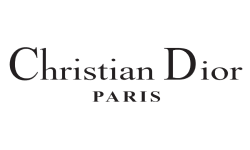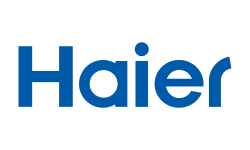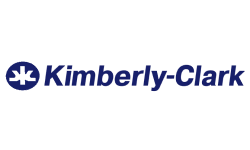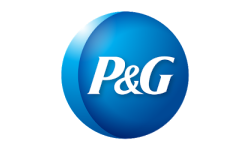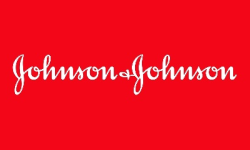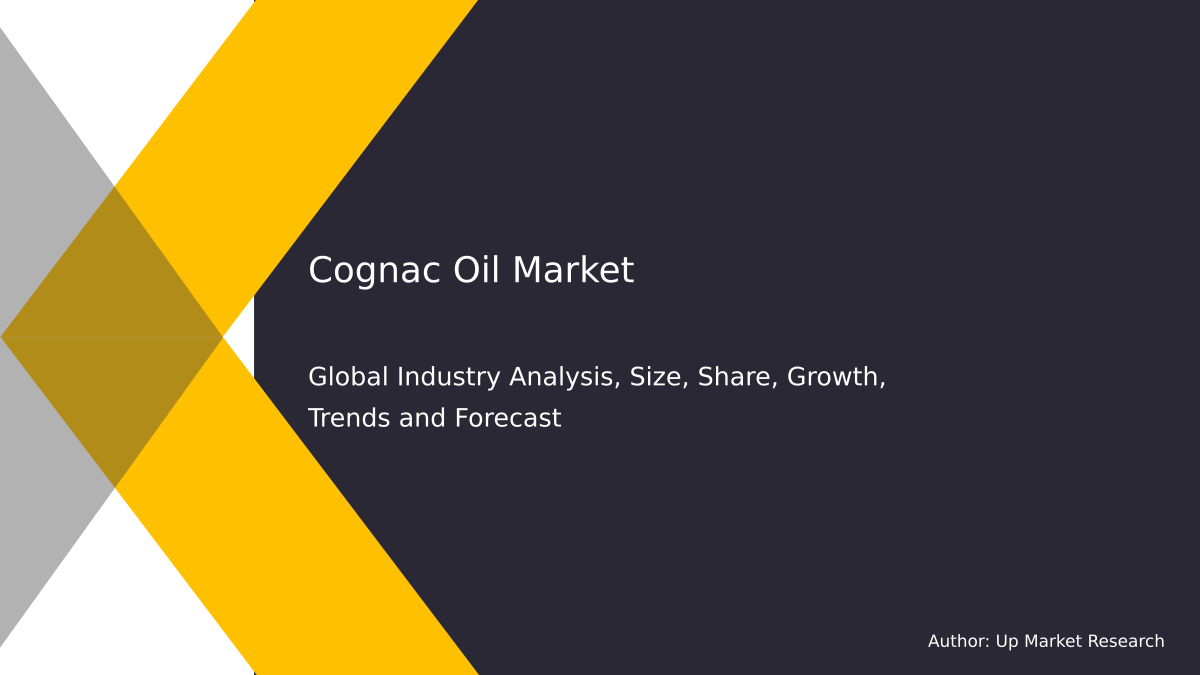
Global Hoses and Belting Market by Type (Rubber Hoses, Rubber Belts), By Application (Agricultural, Construction, Mining, Others) and Region (North America, Latin America, Europe, Asia Pacific and Middle East & Africa), Forecast To 2028
The Global Hoses and Belting Market size is expected to reach USD 4.5 billion by 2028. The growth can be attributed to factors such as increasing demand from end-users for rubber hoses, growing construction sector across all regions, etc. This market is in its nascent stage, and it has the potential to grow substantially if end-users start adopting technology such as self-sealing pipes which prevent leakage with every use.
Hoses and belting are mainly used for conveying liquids, gas, or other fluids. Hoses may also be called pipes which can conduct fluid in a flexible pipe that is usually made up of rubber with reinforced walls to withstand pressure. The belting type typically refers to wide material banded together by metal belts and traditionally utilized for driveshafts in machines as well as conveyors carrying items from one point to another inside industrial plants.
A hose may be in use at home where they carry liquids from one point to another like watering plants on weekends while other times they might be utilized by mechanics for transferring liquids between containers without spilling them. They're also employed for industrial purposes where we can see them carrying hazardous chemicals inside an internal combustion engine; alternatively, certain varieties would be used on power lines to transport electricity.
On the basis of Type, the market is segmented into Rubber hoses, Rubber Belts.
Rubber Hoses:
rubber hoses are used in a variety of industrial, commercial, and residential applications. They are typically composed of polymers such as natural rubber, butadiene rubber, or chloroprene rubber with reinforcing fibers made from materials like textile yarns, glass fiber cord, or steel wire to give the hose greater strength and flexibility. Rubber Hoses are available in many shapes for different purposes including couplings that connect two lengths together; bends that change the direction of flow; loops that wrap around objects; elbows for 90 degree turns etc.
The types of hose include rubber, reinforced steel-wire braid, plastic, textile, and natural fiber. The most common type is rubber as it has a long lifespan with excellent resistance to chemical damage when used for conveying fluids such as water or oil. Rubber hoses are considered more durable than other types of hoses because they can be used multiple times without worrying about damage or wear and tear, unlike plastic ones that require disposal after just one use.
Rubber Belts:
Rubber belts are flexible bands made of vulcanized rubber that is intended to be used as a power transmission belt. Rubber belts of various designs and ornaments have been in use since the late 19th century for industrial purposes, particularly when powering large machinery such as textile mills, sawmills, cranes, and locomotives.
In recent times they have also found other applications including use with automobile engine timing systems (e.g., on GM Chevrolet Corvair models), camshafts on overhead valve engines; food industry machinery (such as dough-kneading machines) where speed regulation is required; and numerous domestic uses (small appliances).
On the basis of Application, the market is segmented into Agricultural (crop irrigation), Construction (vacuum cleaner and dishwasher), Mining (water mining), and Others such as hospitals or food processing plants. In the agricultural sector, it is common to use them for irrigation purposes; they're also utilized in mining and construction industries.
On the basis of Region, the market is segmented into North America, Latin America, Europe & Asia Pacific, and Middle East & Africa. In the North American region, the US was considered as a key market for these products due to its strong demand from the agricultural sector; while in the European region the UK accounts for the largest share owing to increased construction activities. In the German market, rubber hoses are mainly used in the agricultural sector while rubber belts are largely used for vacuum cleaners and dishwashers. In France, nearly half of these products find application in the construction industry; whereas it is mostly utilized for mining activities in Italy.
The Asia Pacific region includes China & Japan as key markets on account of rapid industrialization coupled with increasing demand from other developing countries such as India, Malaysia, etc.; which will give rise to significant growth opportunities during the forecast period 2021-2028 inclusive.
Growth Factors for The Global Hoses and Belting Market:
The global Hoses and the Belting market is projected to grow at a CAGR of around 13% during the forecast period. The growth drivers for this market are increasing industrialization, urbanization, developing economies in the Asia Pacific and Middle East & Africa regions which will increase demand for hoses and belting products. Moreover, technological innovations such as the development of more durable materials that can withstand extreme weather conditions or new technologies like RFID chips used for inventory tracking purposes also have an impact on this market`s growth rate. However, the high cost of raw materials such as rubber may restrain the industry from achieving maximum potential.
Up Market Research published a new report titled “Hoses and Belting Market research report which is segmented by Types (Rubber Hoses, Rubber Belts), By Applications (Agricultural, Construction, Mining, Others), By Players/Companies Eaton, Gates, Hutchinson, Continental, Sumitomo Riko”.
Report Scope
| Report Attributes | Report Details |
| Report Title | Hoses and Belting Market Research Report |
| By Type | Rubber Hoses, Rubber Belts |
| By Application | Agricultural, Construction, Mining, Others |
| By Companies | Eaton, Gates, Hutchinson, Continental, Sumitomo Riko |
| Regions Covered | North America, Europe, APAC, Latin America, MEA |
| Base Year | 2020 |
| Historical Year | 2018 to 2019 (Data from 2010 can be provided as per availability) |
| Forecast Year | 2028 |
| Number of Pages | 212 |
| Number of Tables & Figures | 149 |
| Customization Available | Yes, the report can be customized as per your need. |
The report covers comprehensive data on emerging trends, market drivers, growth opportunities, and restraints that can change the market dynamics of the industry. It provides an in-depth analysis of the market segments which include products, applications, and competitor analysis.

Global Hoses and Belting Market Report Segments:
The market is segmented by Type Rubber Hoses, Rubber Belts and By Application Agricultural, Construction, Mining, Others.
Some of the companies that are profiled in this report are:
- Eaton
- Gates
- Hutchinson
- Continental
- Sumitomo Riko
Hoses and Belting Market research report delivers a close watch on leading competitors with strategic analysis, micro and macro market trend and scenarios, pricing analysis and a holistic overview of the market situations in the forecast period. It is a professional and a detailed report focusing on primary and secondary drivers, market share, leading segments and geographical analysis. Further, key players, major collaborations, merger & acquisitions along with trending innovation and business policies are reviewed in the report.
Key Benefits for Industry Participants & Stakeholders:
- Industry drivers, restraints, and opportunities covered in the study
- Neutral perspective on the market performance
- Recent industry trends and developments
- Competitive landscape & strategies of key players
- Potential & niche segments and regions exhibiting promising growth covered
- Historical, current, and projected market size, in terms of value
- In-depth analysis of the Hoses and Belting Market
Overview of the regional outlook of the Hoses and Belting Market:
Based on region, the market is segmented into North America, Europe, Asia Pacific, Latin America and Middle East & Africa (MEA). North America region is further bifurcated into countries such as U.S., and Canada. The Europe region is further categorized into U.K., France, Germany, Italy, Spain, Russia, and Rest of Europe. Asia Pacific is further segmented into China, Japan, South Korea, India, Australia, South East Asia, and Rest of Asia Pacific. Latin America region is further segmented into Brazil, Mexico, and Rest of Latin America, and the MEA region is further divided into GCC, Turkey, South Africa, and Rest of MEA.

Highlights of The Hoses and Belting Market Report:
- The market structure and projections for the coming years.
- Drivers, restraints, opportunities, and current trends of Hoses and Belting Market.
- Historical data and forecast.
- Estimations for the forecast period 2028.
- Developments and trends in the market.
- By Type:
1. Rubber Hoses
2. Rubber Belts
7. By Application:1. Agricultural
2. Construction
3. Mining
4. Others
- Market scenario by region, sub-region, and country.
- Market share of the market players, company profiles, product specifications, SWOT analysis, and competitive landscape.
- Analysis regarding upstream raw materials, downstream demand, and current market dynamics.
- Government Policies, Macro & Micro economic factors are also included in the report.
We have studied the Hoses and Belting Market in 360 degrees via. both primary & secondary research methodologies. This helped us in building an understanding of the current market dynamics, supply-demand gap, pricing trends, product preferences, consumer patterns & so on. The findings were further validated through primary research with industry experts & opinion leaders across countries. The data is further compiled & validated through various market estimation & data validation methodologies. Further, we also have our in-house data forecasting model to predict market growth up to 2028.
How you may use our products:
- Correctly Positioning New Products
- Market Entry Strategies
- Business Expansion Strategies
- Consumer Insights
- Understanding Competition Scenario
- Product & Brand Management
- Channel & Customer Management
- Identifying Appropriate Advertising Appeals

Reasons to Purchase the Hoses and Belting Market Report:
- The report includes a plethora of information such as market dynamics scenario and opportunities during the forecast period
- Segments and sub-segments include quantitative, qualitative, value (USD Million,) and volume (Units Million) data.
- Regional, sub-regional, and country level data includes the demand and supply forces along with their influence on the market.
- The competitive landscape comprises share of key players, new developments, and strategies in the last three years.
- Comprehensive companies offering products, relevant financial information, recent developments, SWOT analysis, and strategies by these players.
Chapter 2 Assumptions and Acronyms Used
Chapter 3 Research Methodology
Chapter 4 Hoses and Belting Market Overview
4.1 Introduction
4.1.1 Market Taxonomy
4.1.2 Market Definition
4.1.3 Macro-Economic Factors Impacting the Market Growth
4.2 Hoses and Belting Market Dynamics
4.2.1 Market Drivers
4.2.2 Market Restraints
4.2.3 Market Opportunity
4.3 Hoses and Belting Market - Supply Chain Analysis
4.3.1 List of Key Suppliers
4.3.2 List of Key Distributors
4.3.3 List of Key Consumers
4.4 Key Forces Shaping the Hoses and Belting Market
4.4.1 Bargaining Power of Suppliers
4.4.2 Bargaining Power of Buyers
4.4.3 Threat of Substitution
4.4.4 Threat of New Entrants
4.4.5 Competitive Rivalry
4.5 Global Hoses and Belting Market Size & Forecast, 2018-2028
4.5.1 Hoses and Belting Market Size and Y-o-Y Growth
4.5.2 Hoses and Belting Market Absolute $ Opportunity
Chapter 5 Global Hoses and Belting Market Analysis and Forecast by Type
5.1 Introduction
5.1.1 Key Market Trends & Growth Opportunities by Type
5.1.2 Basis Point Share (BPS) Analysis by Type
5.1.3 Absolute $ Opportunity Assessment by Type
5.2 Hoses and Belting Market Size Forecast by Type
5.2.1 Rubber Hoses
5.2.2 Rubber Belts
5.3 Market Attractiveness Analysis by Type
Chapter 6 Global Hoses and Belting Market Analysis and Forecast by Applications
6.1 Introduction
6.1.1 Key Market Trends & Growth Opportunities by Applications
6.1.2 Basis Point Share (BPS) Analysis by Applications
6.1.3 Absolute $ Opportunity Assessment by Applications
6.2 Hoses and Belting Market Size Forecast by Applications
6.2.1 Agricultural
6.2.2 Construction
6.2.3 Mining
6.2.4 Others
6.3 Market Attractiveness Analysis by Applications
Chapter 7 Global Hoses and Belting Market Analysis and Forecast by Region
7.1 Introduction
7.1.1 Key Market Trends & Growth Opportunities by Region
7.1.2 Basis Point Share (BPS) Analysis by Region
7.1.3 Absolute $ Opportunity Assessment by Region
7.2 Hoses and Belting Market Size Forecast by Region
7.2.1 North America
7.2.2 Europe
7.2.3 Asia Pacific
7.2.4 Latin America
7.2.5 Middle East & Africa (MEA)
7.3 Market Attractiveness Analysis by Region
Chapter 8 Coronavirus Disease (COVID-19) Impact
8.1 Introduction
8.2 Current & Future Impact Analysis
8.3 Economic Impact Analysis
8.4 Government Policies
8.5 Investment Scenario
Chapter 9 North America Hoses and Belting Analysis and Forecast
9.1 Introduction
9.2 North America Hoses and Belting Market Size Forecast by Country
9.2.1 U.S.
9.2.2 Canada
9.3 Basis Point Share (BPS) Analysis by Country
9.4 Absolute $ Opportunity Assessment by Country
9.5 Market Attractiveness Analysis by Country
9.6 North America Hoses and Belting Market Size Forecast by Type
9.6.1 Rubber Hoses
9.6.2 Rubber Belts
9.7 Basis Point Share (BPS) Analysis by Type
9.8 Absolute $ Opportunity Assessment by Type
9.9 Market Attractiveness Analysis by Type
9.10 North America Hoses and Belting Market Size Forecast by Applications
9.10.1 Agricultural
9.10.2 Construction
9.10.3 Mining
9.10.4 Others
9.11 Basis Point Share (BPS) Analysis by Applications
9.12 Absolute $ Opportunity Assessment by Applications
9.13 Market Attractiveness Analysis by Applications
Chapter 10 Europe Hoses and Belting Analysis and Forecast
10.1 Introduction
10.2 Europe Hoses and Belting Market Size Forecast by Country
10.2.1 Germany
10.2.2 France
10.2.3 Italy
10.2.4 U.K.
10.2.5 Spain
10.2.6 Russia
10.2.7 Rest of Europe
10.3 Basis Point Share (BPS) Analysis by Country
10.4 Absolute $ Opportunity Assessment by Country
10.5 Market Attractiveness Analysis by Country
10.6 Europe Hoses and Belting Market Size Forecast by Type
10.6.1 Rubber Hoses
10.6.2 Rubber Belts
10.7 Basis Point Share (BPS) Analysis by Type
10.8 Absolute $ Opportunity Assessment by Type
10.9 Market Attractiveness Analysis by Type
10.10 Europe Hoses and Belting Market Size Forecast by Applications
10.10.1 Agricultural
10.10.2 Construction
10.10.3 Mining
10.10.4 Others
10.11 Basis Point Share (BPS) Analysis by Applications
10.12 Absolute $ Opportunity Assessment by Applications
10.13 Market Attractiveness Analysis by Applications
Chapter 11 Asia Pacific Hoses and Belting Analysis and Forecast
11.1 Introduction
11.2 Asia Pacific Hoses and Belting Market Size Forecast by Country
11.2.1 China
11.2.2 Japan
11.2.3 South Korea
11.2.4 India
11.2.5 Australia
11.2.6 South East Asia (SEA)
11.2.7 Rest of Asia Pacific (APAC)
11.3 Basis Point Share (BPS) Analysis by Country
11.4 Absolute $ Opportunity Assessment by Country
11.5 Market Attractiveness Analysis by Country
11.6 Asia Pacific Hoses and Belting Market Size Forecast by Type
11.6.1 Rubber Hoses
11.6.2 Rubber Belts
11.7 Basis Point Share (BPS) Analysis by Type
11.8 Absolute $ Opportunity Assessment by Type
11.9 Market Attractiveness Analysis by Type
11.10 Asia Pacific Hoses and Belting Market Size Forecast by Applications
11.10.1 Agricultural
11.10.2 Construction
11.10.3 Mining
11.10.4 Others
11.11 Basis Point Share (BPS) Analysis by Applications
11.12 Absolute $ Opportunity Assessment by Applications
11.13 Market Attractiveness Analysis by Applications
Chapter 12 Latin America Hoses and Belting Analysis and Forecast
12.1 Introduction
12.2 Latin America Hoses and Belting Market Size Forecast by Country
12.2.1 Brazil
12.2.2 Mexico
12.2.3 Rest of Latin America (LATAM)
12.3 Basis Point Share (BPS) Analysis by Country
12.4 Absolute $ Opportunity Assessment by Country
12.5 Market Attractiveness Analysis by Country
12.6 Latin America Hoses and Belting Market Size Forecast by Type
12.6.1 Rubber Hoses
12.6.2 Rubber Belts
12.7 Basis Point Share (BPS) Analysis by Type
12.8 Absolute $ Opportunity Assessment by Type
12.9 Market Attractiveness Analysis by Type
12.10 Latin America Hoses and Belting Market Size Forecast by Applications
12.10.1 Agricultural
12.10.2 Construction
12.10.3 Mining
12.10.4 Others
12.11 Basis Point Share (BPS) Analysis by Applications
12.12 Absolute $ Opportunity Assessment by Applications
12.13 Market Attractiveness Analysis by Applications
Chapter 13 Middle East & Africa (MEA) Hoses and Belting Analysis and Forecast
13.1 Introduction
13.2 Middle East & Africa (MEA) Hoses and Belting Market Size Forecast by Country
13.2.1 Saudi Arabia
13.2.2 South Africa
13.2.3 UAE
13.2.4 Rest of Middle East & Africa (MEA)
13.3 Basis Point Share (BPS) Analysis by Country
13.4 Absolute $ Opportunity Assessment by Country
13.5 Market Attractiveness Analysis by Country
13.6 Middle East & Africa (MEA) Hoses and Belting Market Size Forecast by Type
13.6.1 Rubber Hoses
13.6.2 Rubber Belts
13.7 Basis Point Share (BPS) Analysis by Type
13.8 Absolute $ Opportunity Assessment by Type
13.9 Market Attractiveness Analysis by Type
13.10 Middle East & Africa (MEA) Hoses and Belting Market Size Forecast by Applications
13.10.1 Agricultural
13.10.2 Construction
13.10.3 Mining
13.10.4 Others
13.11 Basis Point Share (BPS) Analysis by Applications
13.12 Absolute $ Opportunity Assessment by Applications
13.13 Market Attractiveness Analysis by Applications
Chapter 14 Competition Landscape
14.1 Hoses and Belting Market: Competitive Dashboard
14.2 Global Hoses and Belting Market: Market Share Analysis, 2019
14.3 Company Profiles (Details – Overview, Financials, Developments, Strategy)
14.3.1 Eaton
14.3.2 Gates
14.3.3 Hutchinson
14.3.4 Continental
14.3.5 Sumitomo Riko
The global Hoses and Belting market has been segmented based on
By Types
- Rubber Hoses
- Rubber Belts
- Agricultural
- Construction
- Mining
- Others
- Asia Pacific
- North America
- Latin America
- Europe
- Middle East & Africa
- Eaton
- Gates
- Hutchinson
- Continental
- Sumitomo Riko
Related Reports
Some other reports from this category!


